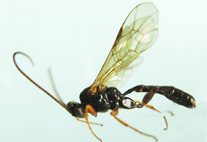Abstract
The genus Melanophryniscus Gallardo, 1961 currently comprises 25 recognized species (Frost 2012) arranged in three (Cruz & Caramaschi 2003) to four species groups (Cespedez & Motte 2001, quoted by Maneyro et al. 2008) on the basis of morphological characters. The Melanophryniscus stelzneri species group currently contains nine species, i.e. M. atroluteus (Miranda-Ribeiro, 1920), M. cupreuscapularis Céspedez & Alvarez, 2000, M. dorsalis (Mertens, 1933), M. fulvoguttatus (Mertens, 1937), M. klappenbachi Prigioni & Langone, 2000, M. krauczuki Baldo & Basso, 2004, M. montevidensis (Philippi, 1902), M. rubriventris (Vellard, 1947), and M. stelzneri (Weyenbergh, 1875). So far, advertisement calls of only four of these species have been described, i.e. those of M. atroluteus, M. dorsalis, M. krauczuki, and M. montevidensis (Kwet et al. 2005, Baldo & Basso 2004). Herein, we describe the courtship call and distress call of M. klappenbachi and compare it with the calls of other members of the group (for definitions of the respective call types see below).
References
Bonansea, M.I. & Vaira, M. (2012) Geographic and intrapopulational variation in colour and patterns of an aposematic toad, Melanophryniscus rubriventris (Amphibia, Anura, Bufonidae). Amphibia-Reptilia, 33, 11–24.
http://dx.doi.org/10.1163/156853811X619754Cruz, C.A.G. & Caramaschi, U. (2003) Taxonomic status of Melanophryniscus stelzneri dorsalis (Mertens, 1933) and Melanophryniscus stelzneri fulvoguttatus (Mertens, 1937) (Amphibia, Anura, Bufonidae). Boletim do Museu Nacional, Nova Série, Zoologia, 500, 1–11.
Duellman, W.E. & Trueb, L. (1994) Biology of amphibians. Baltimore & London: Johns Hopkins University Press.
Frost, D.R. (2013) Amphibian species of the world: an online reference. Version 5.6 (9 January 2013). Electronic Database accessible at http://research.amnh.org/herpetology/amphibia/index.html. American Museum of Natural History, New York, USA (accessed 28.01.2013).
Kwet, A., Maneyro, R., Zillikens, A. & Mebs, D. (2005) Advertisement calls of Melanophryniscus dorsalis (Mertens, 1933) and M. montevidensis (Philippi, 1902), two parapatric species from southern Brazil and Uruguay, with comments on morphological variation in the Melanophryniscus stelzneri group (Anura: Bufonidae). Salamandra, 41, 2–30.
Larson, P.M., de Sá, R.O. & Arrieta, D. (2003) Chondrocranial, hyobranchial and internal oral morphology in larvae of the basal bufonid genus Melanophryniscus (Amphibia: Anura). Acta Zoologica, 84, 145–154.
http://dx.doi.org/10.1046/j.1463-6395.2003.00140.xManeyro, R., Naya, D.E. & Baldo, D. (2008) A new species of Melanophryniscus (Anura, Bufonidae) from Uruguay. Iheringia, Sér. Zool., Porto Alegre, 98, 189–192.
http://dx.doi.org/10.1590/S0073-47212008000200003R Core Team (2012) R: A language and environment for statistical computing. R Foundation for Statistical Computing, Vienna, Austria. URL http://www.R-project.org/.
Sueur, J., Aubin, T. & Simonis, C. (2008) Seewave: a free modular tool for sound analysis and synthesis. Bioacoustics, 18, 213–226.
Wells, K.D. (2007) The ecology and behavior of amphibians. The University of Chicago Press, Chicago and London.

